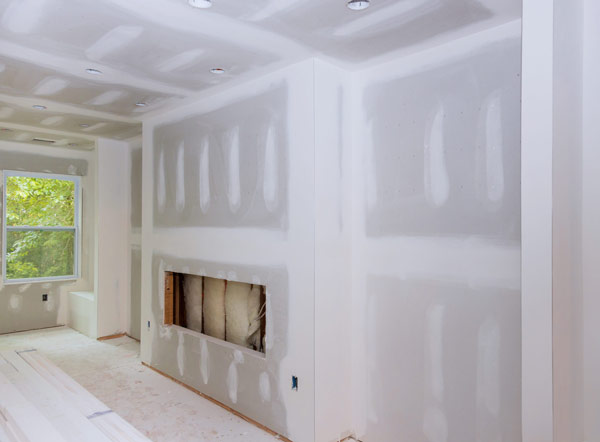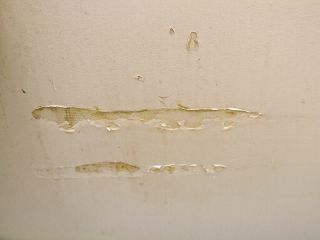Experience top-quality finishes from leading drywall contractors in combination with Interior Painting.
Necessary Tips for Effective Drywall Repair Work and Installment Techniques
Efficient drywall repair and setup calls for a careful technique. Recognizing the kinds of drywall and having the right devices is essential. Correct methods and accurate dimensions can significantly affect the result. Lots of forget necessary actions like taping and sanding, which can make or damage the last look. As jobs advance, common obstacles might develop that need attention. Discovering these suggestions can result in a much more refined and successful coating.
Recognizing Different Types of Drywall
Recognizing the numerous sorts of drywall is necessary for any type of effective repair work or setup job. Drywall, commonly referred to as plaster board, comes in a number of selections tailored for certain applications. Standard drywall is the most widely made use of kind, suitable for general interior wall surfaces and ceilings. Moisture-resistant drywall, typically environment-friendly in shade, is created for areas susceptible to moisture, such as kitchens and shower rooms. Fireproof drywall, normally colored pink or purple, is engineered to withstand greater temperature levels and is commonly made use of in garages or near heating systems. Additionally, soundproof drywall assists reduce noise transmission, making it ideal for multi-family homes or tape-recording workshops. Specialty drywall, like concrete board, is used in wet locations like showers or bathtub surrounds. Recognizing these kinds assists in picking the appropriate material for every job, making certain sturdiness and efficiency in repair services or new installments.
Essential Devices for Drywall Repair Service and Installation
Having the right devices is essential for effective drywall repair service and setup. A quality utility knife is important for reducing drywall sheets specifically. A drywall T-square assists guarantee straight edges, while a taping knife is required for using joint compound smoothly over seams. In addition, a drywall saw allows for eliminating harmed sections or suitable drywall around components.
For hanging drywall, a power drill with drywall screws is essential, as it enables safe and quick installation. A degree is likewise vital to confirm that the drywall is straight and appropriately lined up. A sanding block or post sander is essential for raveling joint substance once it has dried. Lastly, a measuring tape is vital for accurate dimensions, stopping waste and guaranteeing a correct fit. Equipped with these devices, people can deal with drywall projects properly, causing professional-looking results.
Step-by-Step Guide to Fixing Holes and Cracks
When attending to openings and splits in drywall, having the right devices and products is vital for an effective fixing. This overview lays out the essential things and supplies a clear, step-by-step procedure to effectively recover the surface. Understanding these components will certainly help guarantee a smooth coating and lasting outcomes.
Devices and Products Needed
A fully equipped toolkit is essential for effective drywall repair and installment. Secret devices include an energy knife for cutting drywall, a tape step to assure accurate sizing, and a drywall saw for larger holes. A putty knife is essential for applying joint compound efficiently, while a sanding block or post sander assists attain a seamless surface. For patching, a roll of fiberglass fit together tape or paper tape is necessary to enhance joints. Additionally, a drill and screws are needed for protecting new drywall items. Vital products contain joint compound, primer, and paint to finish the repair work. Having these devices and materials available assures a smoother, a lot more reliable repair service procedure, generating professional-looking outcomes.
Repair Work Process Actions
Fixing openings and cracks in drywall requires an organized method to guarantee a smooth finish. The area bordering the damages needs to be cleansed extensively to get rid of dust and debris. Next off, for little cracks, a putty blade is made use of to apply a joint compound uniformly over the area. For larger openings, a patch is required; the damaged area is removed, and a brand-new piece of drywall is suited place, safeguarded with screws. Once the patch remains in position, joint substance is put on mix the edges. After drying, sanding the location smooth is crucial. Ultimately, the repaired surface area must be keyed and painted to match the surrounding wall surface, ensuring an inconspicuous repair.
Strategies for Putting Up Drywall Panels
Setting up drywall panels requires careful preparation and exact execution to guarantee a smooth and expert finish. First, it is necessary to measure the wall surface space accurately and cut the panels to fit, guaranteeing that they straighten with the studs. Placing the panels horizontally is usually recommended, as this can boost the architectural integrity and lower the number of joints.
Using drywall screws, installers need to secure the panels every 16 inches along the studs, making sure a firm hold. It is important to prevent overdriving the screws, which can harm the paper surface area. For sides and edges, using an energy blade enables tidy cuts and a tight fit.

Ending Up Touches: Taping, Mudding, and Sanding
Once the drywall panels are safely in place, the following essential step includes the finishing touches of taping, mudding, and sanding. Insulation is very important for creating a smooth change in between panels and hiding joints. A high quality drywall tape, either paper or fiberglass harmonize, need to be applied over the seams, guaranteeing it sticks appropriately to the mud that will certainly be applied next.
Mudding, or applying joint substance, follows the taping process. This compound fills gaps and smooths out the surface area. An initial layer should be applied kindly, feathering the edges to blend with the drywall. After the first layer dries, subsequent layers may be needed for a perfect surface.
Finally, fining sand is needed to attain a smooth surface. A fine-grit sandpaper needs to be used to carefully smooth out any type of blemishes. Care should be required to prevent over-sanding, which can harm the drywall - drywall contractor. Properly carried out, these completing touches create an expert appearance ready for painting
Tips for Maintaining Your Drywall After Setup
Maintaining drywall after installation is vital to preserving its look and architectural integrity. Regular cleansing is essential; dust and dirt can collect, so gentle cleaning with a wet fabric is suggested. Property owners ought to likewise inspect for any kind of signs of wetness or mold and mildew, particularly in high-humidity areas like kitchens and bathrooms. If any type of damages occurs, it's crucial to address it quickly to stop more concerns.
Using furnishings pads can assist prevent scrapes or damages from hefty products. Additionally, painting the drywall with a high-quality, cleanable paint gives an extra layer of security and makes future cleansing easier. Prevent utilizing rough cleansers or devices, as these can harm the surface area. Preserving a secure interior environment with proper moisture levels will certainly aid prevent contorting or cracking over time. By following these ideas, one can ensure that drywall continues to be in excellent condition for years to come.
Often Asked Inquiries
Exactly How Long Does Drywall Require To Fully Dry After Installation?

Can I Install Drywall Over Existing Drywall?
Yes, drywall can be mounted over existing drywall, but it is vital to guarantee the underlying surface is safe and secure and appropriately prepared. This technique can boost insulation and reduce installation time, though it may include weight.
What Is the most effective Method to Soundproof Drywall?
The most effective method to soundproof drywall involves making use of specialized soundproofing materials, such as durable channels, acoustic caulk, and sound-dampening drywall. These techniques efficiently reduce sound transmission between areas, improving general acoustic performance in living spaces.
Just how Do I Choose the Right Drywall Thickness?
To choose the ideal drywall thickness, think about the application and area. Standard residential walls typically use 1/2 inch, while ceilings or specialized areas may require 5/8 inch for added toughness and soundproofing capacities.
Exist Eco-Friendly Drywall Options Available?
Yes, green drywall alternatives are available. These include items made from recycled products, plaster boards with low volatile organic compounds (VOCs), and those utilizing lasting manufacturing processes, using environmentally-conscious selections for building and renovation projects.
Having the right tools is crucial for reliable drywall repair and installment. For hanging drywall, a power drill with drywall screws is vital, as it allows protected and fast installation. Trick tools include an utility knife for cutting drywall, a tape measure to guarantee precise sizing, and a drywall saw for larger openings. Yes, drywall can be mounted over existing drywall, yet it is essential to guarantee the underlying surface is secure and appropriately prepared. The best way to soundproof drywall entails making use of specialized soundproofing materials, such as resistant channels, acoustic caulk, and sound-dampening drywall.